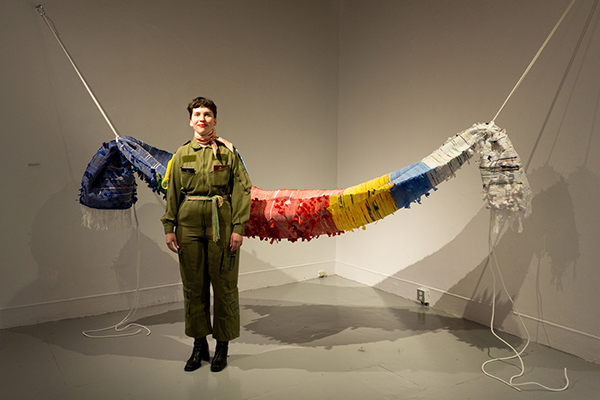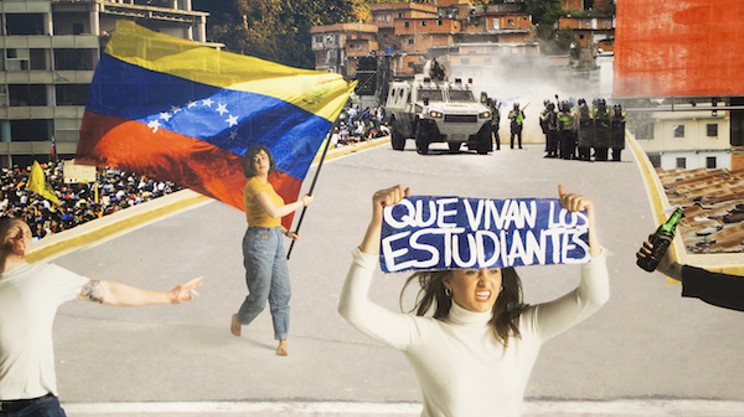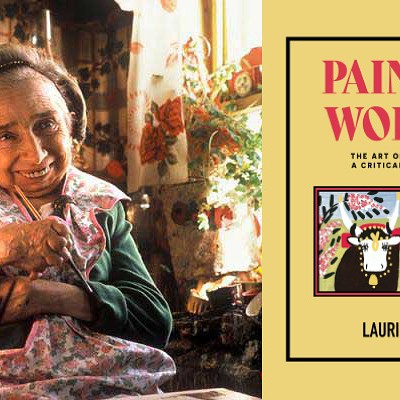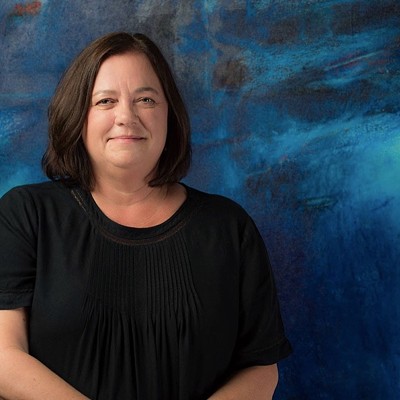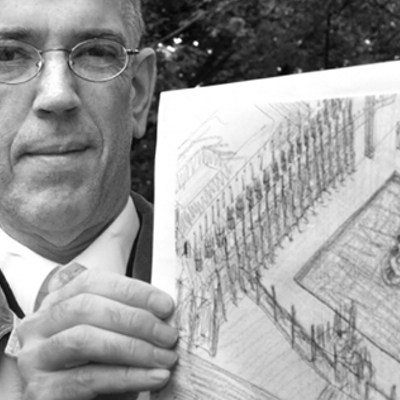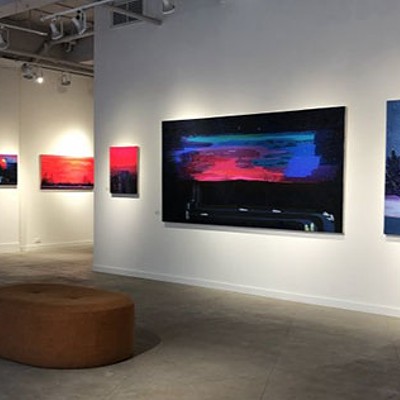Exhibit 202,
Peace and Freedom Park, at South and Hollis Streets
E xploring topics like migration and identity is sometimes difficult. It can open controversial discussions or ones that were once concealed. For interdisciplinary artist Camila Salcedo, she doesn't shy away from these topics.
Instead, her art faces them head-on.
"I personally believe that borders are illusions and sometimes identities were created to divide us," she says.
Salcedo's art effectively reflects these beliefs. Miss Universe, Salcedo's persona, challenges her own identity and the stereotypes of Venezuelan beauty and feminity. She's also woven, crocheted and worked with flags in relation to her Venezuelan identity.
Her solo undergraduate exhibition, Equis, used textiles, video and performance to break rules about borders and further consider her Venezuelan-Canadian identity.
Salcedo immigrated to Toronto from her birth country of Venezuela when she was 11 years old. She studied at Earl Haig Secondary School in the visual arts program and then moved to Halifax to study interdisciplinary art at NSCAD University.
In 2017, Salcedo studied abroad in Cape Town, South Africa. Two years prior, a protest began called #RhodesMustFall. Protestors pushed for the removal of a statue of nineteenth-century British colonialist Cecil John Rhodes at the University of Cape Town. (Sound familiar?)
After returning to Halifax and participating in the protest against the statue of Edward Cornwallis, Salcedo realized a resistance against colonialism, oppression and white supremacy was happening in Canada and around the world.
Last year, one of the five Latin American residencies Salcedo completed was The Lab Program in Mexico City. She watched videos and read about different monuments that were taken down throughout the world. She made a video called Coreographies of Deconstruction, where she choreographed a dance to imitate the moves of people taking down around 10 different monuments.
At this year's Nocturne festival, Salcedo built upon her observations and research, creating an installation called Replacing The Monument. The installation will be located at the park officially known as Cornwallis Park, on South Street between Hollis and Barrington. It'll be a fully accessible pedestal where participants can replace the space where the monument once stood with their own living bodies.
"What would it look like," she says, "if people go on and off a pedestal throughout the night and sort of activate the space by replacing the static monument that was previously there with real bodies and real people?"

